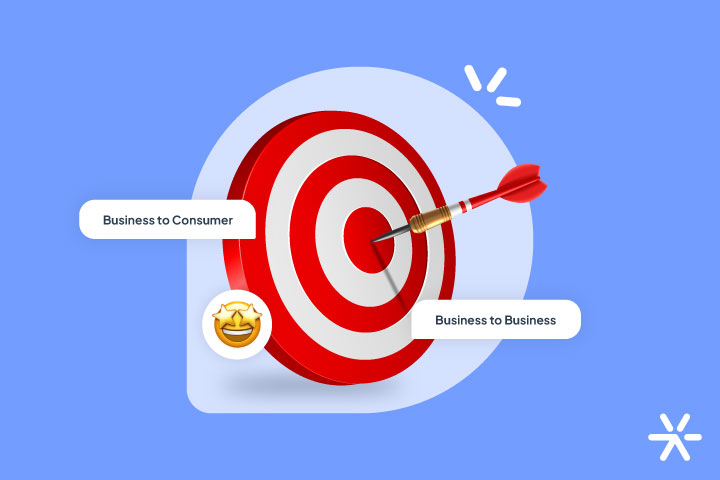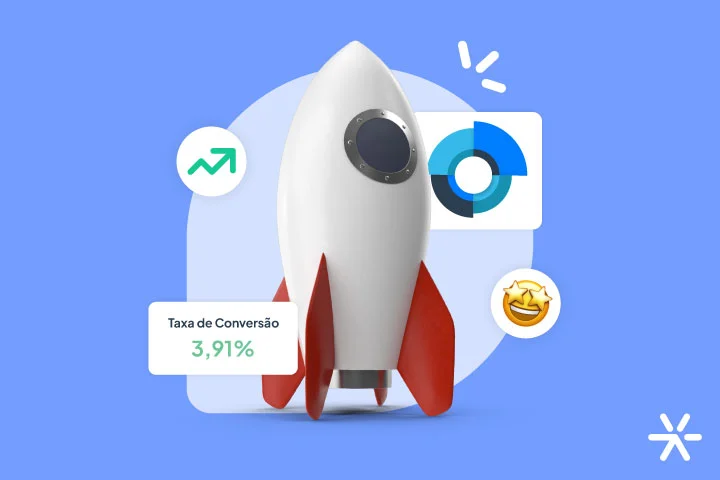What Is Omnichannel and How to Apply This Strategy?
The omnichannel strategy can transform the experience delivered to users, who today engage through multiple consumption channels.
With this approach, the gap between online and offline interactions is narrowed — and the goal is to ensure the consumer no longer even notices the barriers that once existed between these channels.
Learn more about this concept, its benefits, challenges, and best practices in this article.
What Is Omnichannel?
Omnichannel is the name given to a communication strategy that considers and integrates the various channels of a brand, using them simultaneously, in a connected and strategic way, to deliver the best and most consistent user experience possible.
This means the omnichannel strategy aims to offer the same quality of interaction between brand and customer, regardless of whether the channel is online or offline.
The term is often confused with other channel-related strategies, but don’t mix them up:
Multichannel
A multichannel strategy involves multiple communication or sales channels of a brand, but they are not necessarily integrated or connected.
In this setup, not only is integration lacking, but sometimes channels don’t share information — or even compete with each other.
Crosschannel
Crosschannel means crossing or blending channels.
This occurs when channels interact and complement each other, but without a truly integrated strategy.
For example, when you buy something online but choose to pick it up at a physical store.
Single Channel
As the name suggests, a single-channel strategy relies on just one sales or communication channel.
Few companies still operate this way, as online channels — even if only for support — have become essential today.
Why Invest in Omnichannel?
The way we consume and communicate has changed, and businesses must keep up to meet consumers where they are.
There are many reasons to invest in omnichannel if your company hasn’t done so yet:
Unified Experiences
Imagine having a great experience online but a terrible one in the physical store?
Or vice versa — you have a positive offline experience but when you decide to buy online later, you’re faced with a slow-loading, untrustworthy platform with poor customer service?
That’s why unifying and integrating the user experience is key to improving repeat purchase and retention rates, while also delivering what the customer wants.
Greater Efficiency
By unifying the experience, all stages of the sales funnel can be addressed with the same level of quality — whether pre-sale, during the decision-making process, or post-sale.
More Sales Opportunities
By expanding and improving your sales and support channels, you naturally create more opportunities to sell.
Better Business Management
An integrated approach helps improve brand and business management by centralizing information and aligning key areas like communication, support, and sales.
Greater Visibility
Your business gains more visibility by operating through multiple channels — and becomes more easily recognized when those channels are standardized and connected.
Also read the article: What Is a Value Proposition, What Is It For, and How to Create One?
Higher Customer Satisfaction
If you give customers what they want, satisfaction increases.
When users have good experiences across various channels, the chances of them recommending your brand also go up.
Customer Loyalty
And of course, satisfied customers return.
And they return more quickly and easily when they can choose from various channels to get support or make a new purchase.
Detailed Reports
Investing in an omnichannel strategy also means investing in tools and data analysis to support decision-making.
With this, your reports become more detailed and meaningful, offering metrics that truly reflect what’s working — and what needs improvement — in each channel.

What Are the Benefits of Omnichannel?
Customer satisfaction, improved sales results, and increased loyalty and referrals should already be enough to convince you to invest in omnichannel, right?
In addition, this strategy helps companies strengthen brand perception, improve products or services, integrate departments, and streamline operations.
What Are the Main Challenges of Omnichannel?
Of course, not everything is easy when implementing such a powerful strategy.
Here are some of the biggest challenges companies face when adopting omnichannel:
Isolated Channels Without Integration
True omnichannel requires real integration between channels.
And creating that integration isn’t always fast or simple.
You need a well-structured strategy and a clear action plan with defined objectives and steps.
Cultural Change Within the Company
To succeed with omnichannel, a company must change more than just its communication or sales processes — it must change its culture.
That’s how all departments, managers, and employees will be trained to deliver a high-quality, unified experience.
Aligning Inventory Management with Logistics
If your sales channels are integrated, your inventory and logistics need to be too.
Imagine the frustration of a customer who purchases a product only to find out it was out of stock — because it had already been sold through another channel.
So, inventories and information must be synchronized and accessible across all platforms.
Understanding the Customer Profile
Another challenge is understanding customer behavior in an omnichannel setup.
You need deep knowledge of who your customer is and what they expect when navigating different sales and service channels.
Lack of Investment in Technology
There’s no way around it: to support an omnichannel strategy, you must invest in technology.
Only then can you integrate logistics, customer support, sales processes, and data analysis efficiently.
How to Apply Omnichannel in 7 Steps
Want to implement an omnichannel strategy but don’t know where to start?
Here are 7 tips to help you develop a solid action plan:
1. Integrate the Company’s Strategy
For omnichannel to work, it’s necessary to align not just marketing and sales — but the strategies of every department.
Processes and workflows will change, so teams must have clarity and commitment to the goal of integration.
2. Assess the Current Customer Experience
Planning to shift strategies?
First, evaluate your current state. Map out your processes and consult with teams to identify the specific challenges of integrating your channels.
3. Request Customer Feedback
If your goal is to improve the user experience, collect feedback directly from customers.
Use surveys to identify what could be improved in each channel — and uncover new insights and opportunities.
You may also be interested in: ICP, Persona, and Target Audience — Don’t Confuse These 3 Concepts
4. Use Technology to Centralize Customer Data
Find the best systems and tech solutions within your budget to support this robust transition.
This includes inventory and logistics systems, marketing and communication tools, sales platforms, and customer service solutions.
It’s also important that all responsible teams have access to the data — making the experience faster and safer for everyone involved.
5. Adopt Marketing Automation
Another useful technology is marketing automation.
With it, you can engage prospects at different stages of the sales funnel, personalize communication, and analyze behavioral data to fine-tune your strategy.
6. Create Your Action Plan
Once all of the above steps are complete, it’s time to develop your implementation plan — identifying what needs to change or be adapted to achieve true omnichannel integration.
Outline which channels will be used, which technologies will be adopted, who will be responsible, and the timeline for each task.
7. Monitor Results
Finally, as with any strategy implemented in a business, you need to analyze results and make data-based decisions.
Use your new tools to their full potential and revisit your plans whenever needed.
Especially during the early stages of the transition, not everything will go as expected — and that’s okay.
Take a step back, review the data carefully, repeat the process, and adjust as needed until you’ve built the best possible omnichannel strategy for your customers.








